This is the Tumblr page for Science NetLinks, the best place to find free quality science resources for K-12 teachers, students and parents. Developed by the American Association for the Advancement of Science.
Don't wanna be here? Send us removal request.
Photo

National Fossil Day
National Fossil Day spotlights the unique ways in which fossils are clues to the world’s history. It was first organized in 2010 to promote public awareness and stewardship of fossils, as well as to foster a greater appreciation of their scientific and educational value.
National Fossil Day is co-sponsored by the National Park Service and by the American Geological Institute. In the United States, fossils can be found at more than 230 national park areas around the country.
Learn more.
11 notes
·
View notes
Photo

Ada Lovelace Day
Ada Lovelace Day is an international celebration of the achievements of women in science, technology, engineering, math, and all related STEM fields.
The celebration is named in honor of English mathematician Augusta Ada King (1815-1852), Countess of Lovelace, known colloquially as Ada Lovelace. Lovelace, the daughter of Lord Byron, is sometimes considered the world's first computer programmer for the algorithm she wrote for Charles Babbage's analytical engine, one of the world's first mechanical computers. Over the years there have been historical disagreements over the extent of Lovelace's knowledge of the subject and the originality of the work she published in her article, “Sketch of the Analytical Engine, with Notes from the Translator," but Babbage himself seemed to dismiss such future claims in his memoir.
Learn more.
Read the NY Times Overlooked Obit on Ada Lovelace:
A gifted mathematician who is now recognized as the first computer programmer.
Image credit: Alfred Edward Chalon [Public domain], via Wikimedia Commons
41 notes
·
View notes
Photo

5 Questions for a Scientist: Glaciologist Kelly Brunt
Occupation: Associate Research Scientist Institution: NASA Goddard Space Flight Center and University of Maryland Field: Glaciology Focus: Remote sensing of ice shelves and icebergs Kelly is an Associate Research Scientist with the University of Maryland and the NASA Goddard Space Flight Center. She has a bachelor’s degree in Geology from Syracuse University, a master’s degree in Geology from the University of Montana, and a Ph.D. in Geophysics from the University of Chicago. She was a postdoctoral scholar at Scripps Institution of Oceanography, where she worked on ICESat laser altimetry data, and she is currently part of the ICESat-2 mission, which launched last Saturday, September 15, working on validation of the elevation data. On the weekends in the winter, Kelly coaches alpine ski racing at Liberty Mountain, in southern Pennsylvania.
You can follow both Kelly's NASA and skiing activity or connect with her on Twitter (@KellyMBrunt).
1. Explain what you do in your work in one sentence (or two).
I am a glaciologist (I study ice sheets) and I am part of NASA’s Ice, Cloud, and Land Elevation Satellite 2 (ICESat-2) mission. I am specifically tasked with looking at the ice sheets and validating the satellite elevation data products.
2. When did you first become interested in your field?
I have always preferred the winter. Growing up in Connecticut, my extended family liked to ski together and we often took trips to Vermont. The love of winter and snow (and the cold) led me to work in places like Montana, Alaska, and even Antarctica. Working in these places, and wanting to know more about ice, drove me to go back to school for a Ph.D. in geophysics, with an emphasis in glaciology.
Full interview here.
See the rest in our series here.
5 notes
·
View notes
Photo
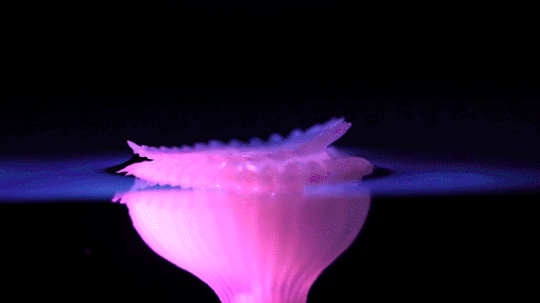

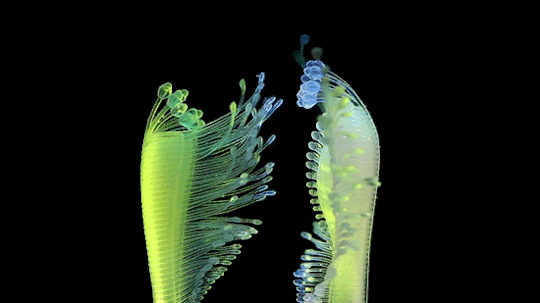
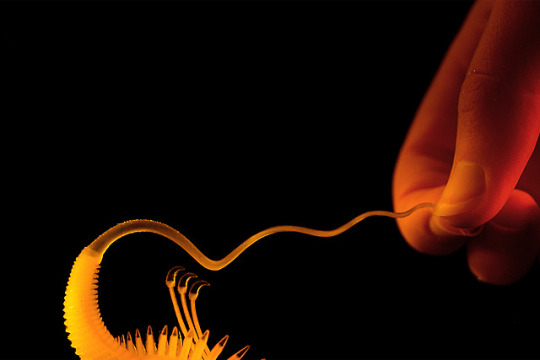
4D-Printed Aquatic Plants Spring to Life in “Hydrophytes” by Nicole Hone
37K notes
·
View notes
Photo
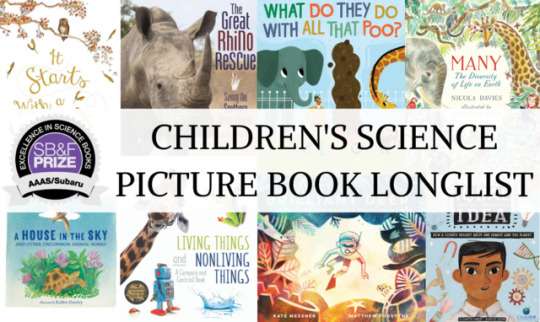
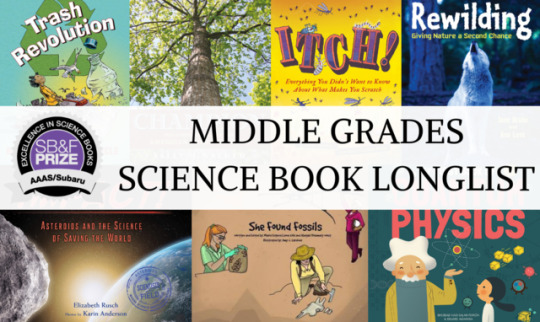
AAAS/Subaru SB&F Prize for Excellence in Science Books Longlists
AAAS and Subaru are pleased to announce the longlist for the 2019 AAAS/Subaru SB&F Prize. The prize, sponsored by Subaru, has been celebrating outstanding science writing and illustration for all age groups since 2005. Awards are presented in five categories: Children’s Science Picture Book, Middle Grades Science Book, Young Adult Science Book, and Hands-On Science Book. Beyond honoring these books with an award, AAAS and Subaru partner to bring them into the community. Through the #SubaruLovesLearning initiative, the finalists and winning books are donated to schools all over the country. Additionally, we creates free K-12 teaching materials based on the books. AAAS believe that, through good science books, this generation, and the next, will have a better understanding and appreciation of science.
Longlist for 2019 Children's Science Picture Book Award
The Brilliant Deep: Rebuilding the World's Coral Reefs, by Kate Messner. Illustrated by Matthew Forsythe. Chronicle Books, 2018.
The Great Rhino Rescue: Saving the Southern White Rhinos, by Sandra Markle. Millbrook Press, 2018.
A House in the Sky: And Other Uncommon Animal Homes, by Steve Jenkins. Illustrated by Robbin Gourley. Charlesbridge, 2018.
Iqbal and His Ingenious Idea: How a Science Project Helps One Family and the Planet, by Elizabeth Suneby. Illustrated by Rebecca Green. Kids Can Press, 2018.
It Starts with a Seed: Watch a Tiny Seed Grow into a Wildlife Wonderland, by Laura Knowles. Illustrated by Jennie Webber. Quarto Group/words & pictures, 2017.
Living Things and Nonliving Things: A Compare and Contrast Book, by Kevin Kurtz. Arbordale Publishing, 2017.
Many: The Diversity of Life on Earth, by Nicola Davies. Illustrated by Emily Sutton. Candlewick, 2017.
What Do They Do with All That Poo?, by Jane Kurtz. Illustrated by Allison Black. Simon & Schuster, 2018.
Longlist for 2019 Middle Grades Science Book Award
Champion: The Comeback Tale of the American Chestnut Tree, by Sally M. Walker. Henry Holt and Company, 2018.
Impact! Asteroids and the Science of Saving the World, by Elizabeth Rusch. Photographs by Karin Anderson. Houghton Mifflin Harcourt, 2017.
Itch! Everything You Didn't Want to Know About What Makes You Scratch, by Anita Sanchez. Illustrations by Gilbert Ford. Houghton Mifflin Harcourt, 2018.
My First Book of Quantum Physics, by Sheddad Kaid-Salah Ferrón. Illustrations by Eduard Altarriba. Button Books, 2018.
Rewilding: Giving Nature a Second Chance, by Jane Drake and Ann Love. Annick Press, 2017.
She Found Fossils, by Maria Eugenia Leone Gold and Abagael Rosemary West. Illustrations by Amy J. Gardiner. CreateSpace, 2017. [Also available in Spanish.]
Trash Revolution: Breaking the Waste Cycle, by Erica Fyvie. Illustrations by Bill Slavin. Kids Can Press, 2018.
The longlists for the Hands-on and YA categories will be announced later this week. Learn more here.
0 notes
Photo



Happy Birthday, Mary G. Ross!
Mary Golda Ross was the first Native American woman engineer. Her work at Lockheed and NASA included developing the Agena rockets, designing concepts for flights to Mars and Venus, and creating operational requirements for spacecraft.
Learn about her life and work from the Smithsonian article, This Little-Known Math Genius Helped America Reach the Stars:
After graduating from Northeastern State College with a math degree, she decided to put her skills to work on behalf of other Native Americans, working first as a statistician for the Bureau of Indian Affairs and then at a Native American boarding school in New Mexico.
Math always called Ross’s name, and in 1942, armed with a master’s degree, she joined Lockheed Aircraft Corporation. As World War II raged, the company was working on new military aircraft. Ross helped them troubleshoot the P-38 Lightning, a fighter plane that came close to breaking the sound barrier and that engineers worried would collapse during dives. (Thanks to the work of Ross and her fellow mathematicians and engineers, Lockheed eventually realized that their fears were unfounded.)
After the war ended, Lockheed sent Ross to UCLA to earn a classification in aeronautical engineering and slowly, she began to progress through the company’s male-dominated ranks. “She worked with a lot of guys with slide rules and pocket protectors,” says Jeff Rhodes, Lockheed Martin’s historian and the editor of Code One magazine. “The stereotype was real.”
Women had always been a part of Lockheed Martin, says Rhodes. Nonetheless, when Ross was recruited to join Skunk Works, the company’s then-top-secret think tank, she was the only woman aside from the secretary.
Image Credits:
Mary G. Ross from Beyond Curie by Amanda Phingbodhipakkiya
Mary G. Ross Google Doodle
Ad Astra per Astra by America Meredith, depicting Mary Gold Ross. Image courtesy of the Smithsonian's National Museum of the American Indian.
#mary g. ross#mary golda ross#NASA#lockheed#aerospace engineer#women in stem#women in science#women in math#hidden figures#beyondcurie#google doodle
58 notes
·
View notes
Video
tumblr
#SubaruLovesLearning Initiative
During August, Subaru and its retailers are once again partnering with AAAS to donate more than 80,000 award-winning science books to K-12 schools across the country.
You can help! Visit a participating local Subaru retailer to add your name and a message to one of these books. You can also take a quiz for a chance to win a prize and pick up this free hands-on science activity book.

You can also download a copy here.
They will have collection bins if you want to drop off school supplies. Join us in helping local schools! Learn more.
1 note
·
View note
Text
What’s Up For August 2018?
The summer Perseids are here!
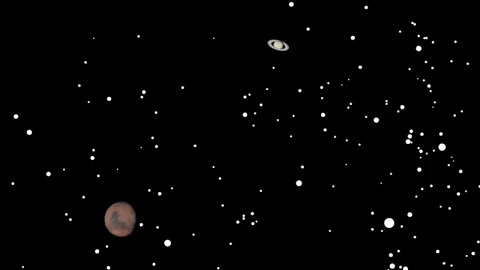
The Perseid meteor shower is the best of the year! It peaks on a Moonless summer night from 4 p.m. EST on August 12 until 4 a.m. EST on August 13.
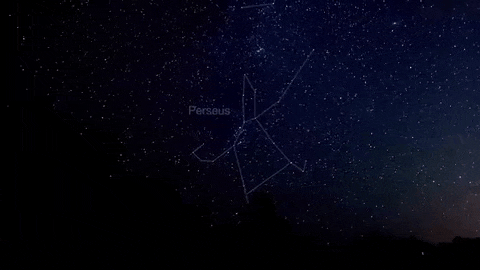
Because the new Moon falls near the peak night, the days before and after the peak will also provide nice, dark skies. Your best window of observation is from a few hours after twilight until dawn, on the days surrounding the peak.
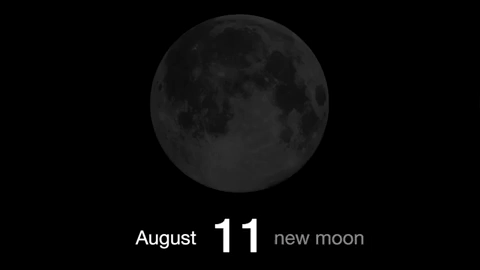
Unlike most meteor showers, which have a short peak of high meteor rates, the Perseids have a very broad peak, as Earth takes more than three weeks to plow through the wide trail of cometary dust from comet Swift-Tuttle.

The Perseids appear to radiate from the constellation Perseus, visible in the northern sky soon after sunset this time of year. Observers in mid-northern latitudes will have the best views.
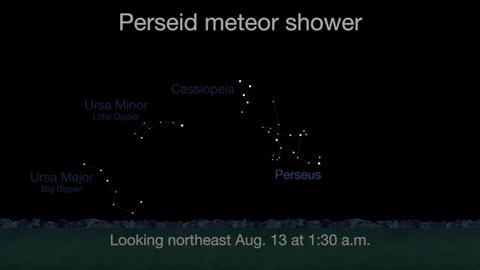
You should be able to see some meteors from July 17 to August 24, with the rates increasing during the weeks before August 12 and decreasing after August 13.
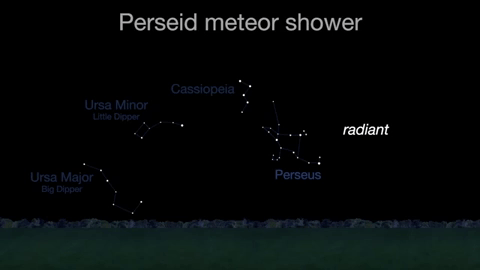
Observers should be able to see between 60 and 70 per hour at the peak. Remember, you don’t have to look directly at the constellation to see them. You can look anywhere you want to-even directly overhead.
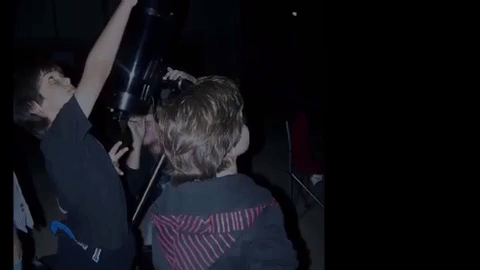
Meteor showers like the Perseids are caused by streams of meteoroids hitting Earth’s atmosphere. The particles were once part of their parent comet-or, in some cases, from an asteroid.
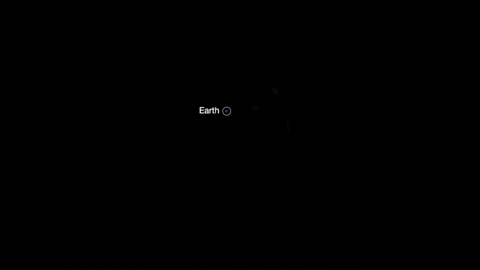
The parade of planets Venus, Jupiter, Saturn and Mars–and the Milky Way continue to grace the evening sky, keeping you and the mosquitoes company while you hunt for meteors.

Watch the full What’s Up for August Video:
youtube
There are so many sights to see in the sky. To stay informed, subscribe to our What’s Up video series on Facebook.
Make sure to follow us on Tumblr for your regular dose of space: http://nasa.tumblr.com
5K notes
·
View notes
Link
From Science:
Lately, I’ve been thinking a lot about Rosalind Franklin, one of the most consequential scientists of the 20th century—indeed, of the entire history of biology—and not just because her 98th birthday would have been last week. She’s been on my mind since the National Academies of Sciences, Engineering, and Medicine (NASEM) issued its June report detailing the prevalence of sexual harassment in university science. Franklin was the victim of one of the most well-known incidents of the particular kind of scientific disrespect that the report calls “gender harassment.”
Gender harassment—defined in the report as disrespecting, demeaning, and deprecating women and their work, abilities, and accomplishments, simply because they are women—has gotten less attention in the report’s aftermath than other forms of sexual harassment, such as sexual coercion and unwanted sexual attention. The report emphasizes, however, that gender harassment is by far the most prevalent form of sexual harassment in academic science, as our colleague Meredith Wadman highlighted. Beyond that, sexual harassment in any form “is not just damaging to targets and bystanders, but also to the integrity of science,” the report states. Franklin’s story illustrates how gender harassment corrodes integrity.
The Matilda Effect
Franklin, one of the very few women doing world-class research in the 1950s, is among history’s most prominent subjects of what historian of science Margaret Rossiter terms the “Matilda Effect”: the practice of ascribing women’s accomplishments to men. An expert in x-ray crystallography, Franklin led the team that created what has been called “arguably the most important photo ever taken,” the celebrated Photo 51, which revealed the helical structure of DNA.
When the structure was published in 1953, however, Franklin—a research associate at King’s College London at the time—was not among the authors. Her crucial contribution was mentioned cursorily at the end of the article as having “stimulated” the authors, James Watson and Francis Crick, who were both researchers at the University of Cambridge—and who, with their paper, gained priority as discoverers.
How did this happen? Shortly after Franklin started at King’s College in 1950, her relationship with another King’s College researcher, Maurice Wilkins, soured. At this remove, and without Franklin’s testimony, we can’t reconstruct how these strong personalities interacted. But we do know that Wilkins, without Franklin’s knowledge or permission, showed Photo 51 to Watson.
The rest, as they say, is history. In 1962, Watson, Crick, and Wilkins shared the Nobel Prize in Physiology or Medicine for discovering the structure of DNA. Franklin had died 4 years earlier at the age of 37 of ovarian cancer—possibly related to x-ray exposure, some have suggested—and thus was ineligible for science’s highest honor, which cannot be awarded posthumously. We can’t know whether she would have been considered for the prize had she lived. But we do know that her contribution to the discovery received little attention for years.
Full story here.
#rosalind franklin#DNA#james watson#francis crick#women in stem#women in science#matilda effect#sexual harassment#gender harassment#science#aaas
17 notes
·
View notes
Photo

Happy 200th Birthday, Maria Mitchell!
Maria Mitchell, the first professional American woman astronomer, was born on this day in 1818 in Nantucket, Massachusetts. Mitchell was also the first woman member of the American Association for the Advancement of Science, two years after its formation, in 1850.
Mitchell was born to Quaker parents who believed in the education of all of their ten children, regardless of gender. Mitchell received a formal education, as well as learning from her father, who was a schoolteacher, banker, and astronomer. He also helped to maintain chronometers, a timepiece sailors used to measure longitude based on time and celestial navigation, for the local whaling fleet. His daughter would assist him in doing astronomical observations and later was trusted to complete them on her own.
In 1835, at the age of 17, Mitchell founded her own elementary school, which was open to girls regardless of race. The following year, Mitchell left the school to take a job at the Nantucket Athaneum, then a private, but affordable, library. She remained at the Athaneum until 1856.
On Oct. 1, 1847, Mitchell was using a two-inch telescope on a Nantucket rooftop when she noticed a blurry object that did not appear on her star charts. This turned out to be a comet, which became known as "Miss Mitchell's Comet" and later C/1847 T1. She became the third woman, after two 18th-century German astronomers—Caroline Herschel and Maria Margarethe Kirch—to discover a comet. King Frederick VI of Denmark, who had offered a prize for the discovery of new comets, awarded Mitchell a medal. She also became the first woman elected to the American Academy of Arts and Sciences because of her discovery.
In 1865, Mitchell was the first person invited to join the faculty of the newly established Vassar College in Poughkeepsie, New York. She accepted the founder's invitation, in part because it came with the promise of an observatory outfitted with a 12-inch telescope, then the second largest in the country. She went on to become a beloved professor, teaching more than 20 years and nurturing her students' abilities as researchers in their own right. Her students did independent, original research and even engaged in field work with Mitchell's professional peers during the solar eclipses of 1869 and 1878. Mitchell, who was involved in suffrage organizations and who served as the second president of the American Association of Women, also organized discussions and lectures for her students about women's rights and politics.
Learn more.
#maria mitchell#Astronomy#comet#aaas#women in stem#vassar college#american academy of arts and sciences#science history#women in science
11 notes
·
View notes
Photo

Remembering Mathematician Julia Bowman Robinson
Julia Bowman Robinson, the first woman mathematician to be elected to the National Academy of Sciences, died on this day in 1985.
Robinson, who was born in 1919, is most famous for helping to answer a single math problem -- Hilbert's "Tenth Problem," one of a series of mathematics problems posed at the Second International Congress of Mathematicians in 1900. The problem sought an effective way to determine whether an integer problem is soluble. Robinson and several other mathematicians, working separately and together, demonstrated such an algorithm cannot exist.
Robinson also spent a year working at the RAND Corporation, where, in 1951, she developed a fundamental theorem of elementary game theory.
Despite spending nearly her whole career at Berkeley, it was not until the publicity surrounding her election to the National Academy of Sciences in 1976, that her alma mater opted to offer her a tenured professorship.
Robinson was the first woman officer of the National Academy of Sciences, the first woman mathematician to receive a MacArthur Foundation Fellowship (the so-called "Genius Grant"), and the first woman president of the American Mathematical Society.
Learn more.
#julia bowman robinson#mathematics#women in stem#national academy of sciences#macarthur foundation#American Mathematical society
5 notes
·
View notes
Photo

Happy Birthday, Rosalind Franklin!
DNA pioneer Rosalind Franklin was born on this day in 1920.
Franklin grew up studying chemistry and physics and continued to pursue the former when she gained admission to Cambridge University over the objections of her father. She completed her undergraduate work in 1941 and her Ph.D. in physical chemistry in 1945. Her work during those war years focused on the molecular structure of coal and charcoal (or, as she put it, “the holes in coal”) under the auspices of the British Coal Utilisation Research Association. She published five papers on the topic, three of them as the sole author, and helped to spawn the study of high-strength carbon fibers.
After the war, Franklin spent several years in Paris, where she continued to hone her work in crystallography (the science of atom arrangement in solid materials). She undertook the study of X-ray crystallography, which utilizes X-rays in order to study how light is diffracted when it hits a crystal. She became quite adept at this technique, and, although her work predominantly had been within physics and chemistry to this point, when she returned to England in 1951 it was to King College’s biophysics program, where she was to examine large biological cells and, in a sudden change of plans, DNA.
It was through Franklin’s X-ray crystallography work on DNA that revelations about the structure of DNA came to light. Scientists around the world were already at work unraveling the mysteries of the biological building block, but it was an image of Franklin’s, Photograph 51 as it would be dubbed, that provided the answers to several mysteries about DNA’s double helix. Maurice Wilkins, the head of the research lab, shared this photograph, without Franklin’s knowledge, with James Watson and Francis Crick, who were working at Cambridge. The clear images allowed Watson and Crick to see where their own research had gone wrong and to correct it. They published their results of the double helix structure of DNA in Nature in 1953. Although her photograph was attributed to her (and a paper she and her graduate student wrote appeared alongside their findings), modern examinations of their work suggest that Franklin’s contributions were downplayed, although whether inadvertantly or intentionally remains a debatable point.
Franklin’s bright future was not to be fully realized, however. She died in 1958 at the age of 37 of ovarian cancer. Her death rendered her ineligible to be considered for the 1962 Nobel Prize that Crick, Watson, and Wilkins would share for their DNA findings.
Learn more.
Photo Credit: National Library of Medicine/Collection of Jenifer Glynn
108 notes
·
View notes
Photo


Happy Birthday, Amelia Earhart!
Aviator Amelia Earhart, the first woman to fly across the Atlantic and holder of the Distinguished Flying Cross, is born on this day in 1897.
Earhart took her first flight in 1920 and was so enamored with it that she began taking flying lessons a week later. Within six months she had saved enough money to purchase a second-hand plane, which she named theCanary. In 1922 she flew the Canary to 14,000 feet – a world record for female pilots at the time. The following year, she became only the 16th woman to receive a pilot’s license from the world aviation governing body, the Fédération Aéronautique Internationale.
After several years of teaching and working as a social worker, Earhart was approached to become the first woman to fly across the Atlantic Ocean. Three women had already died in an attempt to set that record. On June 17, 1928, she joined pilot Wilmer “Bill” Stultz and co-pilot/mechanic Louis E. “Slim” Gordon in a plane namedFriendship. They departed from Newfoundland and landed less than a day later in Wales. Because she was not trained to fly the aircraft, Earhart merely served as a passenger on the flight, but she vowed to make the same crossing on her own in the future.
Later in 1928, Earhart flew across the United States on her own, becoming the first female pilot to accomplish the feat. Catapulted into the spotlight, she helped to raise awareness about aviation and the possibilities the field held both for pilots and for passengers. But she had not forgotten her earlier vow and, in 1932, she became only the second person to make the transatlantic flight solo, flying from Newfoundland to Northern Ireland in a plane she calledBessie. The feat would earn her the Distinguished Flying Cross.
Other flights and other records would follow. She and her husband moved from the East Coast to California, where she joined the faculty of Purdue University’s Department of Aeronautics. She also began training for an attempt at circling the globe. Her route was an ambitious one, and her first attempt ended in a crash in Hawaii. After tinkering with her plans, she and her navigator, Fred Noonan, departed Miami, Florida, on June 1, 1937, on the first leg of what was to be a 29,000 mile journey. The two made several planned stops over the next month, reaching Lae, New Guinea, on June 29. When they took off on July 2, their next planned stop was to be Howland Island, a tiny island in the Pacific Ocean. They did not make it.
Radio transmissions suggest that the pair had problems due to a combination of bad maps, bad weather, and bad radio reception. An extensive and expensive search was conducted for a downed plane, but the wreckage was not (and still has not been) found.
Learn more.
Image Credit:
Smithsonian Institution (Great Images in NASA Description) [Public domain], via Wikimedia Commons
By Harris & Ewing [Public domain], via Wikimedia Commons
113 notes
·
View notes
Photo



Biology and Philosophy Inform Kim KototamaLune’s Delicate Sculptures Made from Grids of Glass
1K notes
·
View notes
Photo





Towering Plumes of Volcanic Smoke Mix With Streaks of Lightning in Photographs by Francisco Negroni
2K notes
·
View notes
Photo

More than 400 years after Galileo Galilei discovered the first of Jupiter’s moons, astronomers have found a dozen more — including one they’ve dubbed “oddball” — orbiting the planet. That brings the total number of Jovian moons to 79.
The team of astronomers originally wasn’t even looking for the 12 new moons. Scott Sheppard of the Carnegie Institution for Science says he and his colleagues had been trying to track down a giant planet they think may be lurking at the outer reaches of our solar system.
As part of that search, Sheppard was using the 4-meter Víctor Blanco Telescope in Chile in March of last year and realized that Jupiter was right near the part of the sky he wanted to search.
“So we could also search for Jupiter moons while looking for things that are well beyond Pluto,” Sheppard says.
Galileo Would Be Stunned: Jupiter Now Has 79 Moons
Image by Roberto Molar Candanosa, courtesy of Carnegie Institution for Science
756 notes
·
View notes
Photo

Happy LGBTSTEM Day
Today is the first international #LGBTSTEMDay!
Pride in STEM:
Thursday 5th July 2018 will be the first ever International Day of LGBT+ People in Science, Technology, Engineering and Maths. It is a day to improve visibility and support for LGBT+ people in STEM, and there are lots of ways you can take part — from a single social media post, to attending or organising a local event.
We hope that the International Day of LGBT+ People in Science and Engineering can help:
-Improve the visibility and representation of LGBT+ scientists through public, academic, and industry engagement. -Strengthen the community of LGBT+ people working in STEM and STEMrelated fields by connecting with key partners -Improve support and resources for LGBT+ scientists and engineers by highlighting the challenges faced by the community and proposing solutions and strategies to universities, organisations and governing bodies.

Credit: Joby Razzell Hollis (@Jobium)
Visit Pride in STEM for details and resources.
#LGBTSTEMDay#pride#pride in stem#ostem#house of stem#interengineering#aaas#science#lgbtq#diversity in stem
54 notes
·
View notes